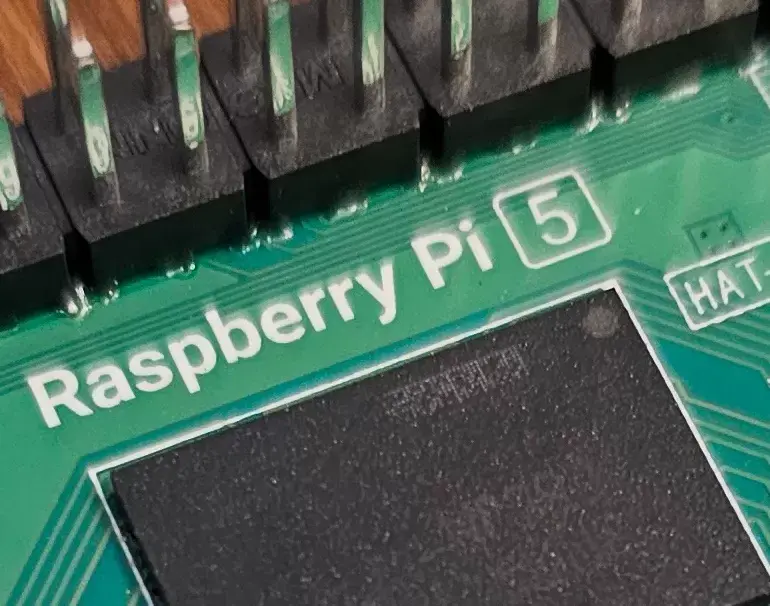Four years after the Raspberry Pi 4 shipped, today the Raspberry Pi 5 is launching with a much improved SoC leading to significant performance gains.
The Raspberry Pi 5 is designed to deliver a 2~3x performance improvement over the Raspberry Pi 4. The Raspberry Pi 5 features a quad-core Cortex-A76 processor that clocks up to 2.4GHz, compared to the four Cortex-A72 cores found in the Raspberry Pi 4 that only clocked up to 1.8GHz. The graphics are also much-improved with now having an 800MHz VideoCore VII graphics processor over the VideoCore VI graphics with the Raspberry Pi 4. The Raspberry Pi 5 is capable of driving two 4K @ 60Hz displays and features 4K @ 60 HEVC decode hardware capabilities.
Also interesting with the Raspberry Pi 5 is that it features in-house silicon in the form of the RP1 “southbridge” used for much of the board’s I/O capabilities. This southbridge should yield faster USB I/O along with other I/O bandwidth upgrades like a doubling of the peak SD card performance. The Raspberry Pi 5 also features a single-lane PCI Express 2.0 interface for improved connectivity.



Wow the foundation really hates the idea of putting reliable dependable storage on their device.
Like would it kill you to have an M2 slot?
Honestly, given the improvement of every other capability in the boards over the years, it’s really mad we don’t have an m.2 slot as an option. Even if they ended up having to create a slightly more expensive SKU (which they seem to have no issues with given the memory options for the Pi4), I don’t think anyone would complain
Edit: apparently there’s gonna be an M.2 HAT, so that’s something at least, would prefer an option to have it on the board and the GPIO header available for something else
The single least reliable part of a raspberry pi is the storage. Always has been.
I don’t even need more professor performance, because the storage performance is the worst part.
The professor really is what sets this device apart from competition
Are we talking Gilligan’s Island or Futurama?
Not sure, but i couldn’t help myself :D
Professor Calculus from Tintin
Talk about setting the Wayback Machine on high…
Likely an issue with the pci express lane not being able to handle nvme and everything else.
I thought that might be the case too, but the launch page has a line that suggests an M.2 HAT will use the new PCI-E interface, so it does make you wonder why they couldn’t include the connector on the board. Might just be me, but I feel like people have been asking for this since they gave up asking for a SATA connector
Probably form factor reasons. The RPi5 doesn’t break the form the RPi3(?) set.
An M.2 makes it really difficult for a kid to pop the card out, plug it into a computer and flash it.
I think RPI Foundation is still holding onto its education-targeted roots.
I think the compute models are more targeted at the industrial/commercial side of requirements.
And any homelab enthusiast would probably be better buying a cheap used/refurbished thin-client
Well, personally I could do without and if it reduces costs I’m for it. Raspberry pi was always about being cheap.
That Compute Module carrier board territory.
The official Compute Module carrier board has a 1xPCIe slot for an NVMe or SATA adapter, and there are 3rd party carrier boards with a M.2 slot on them.